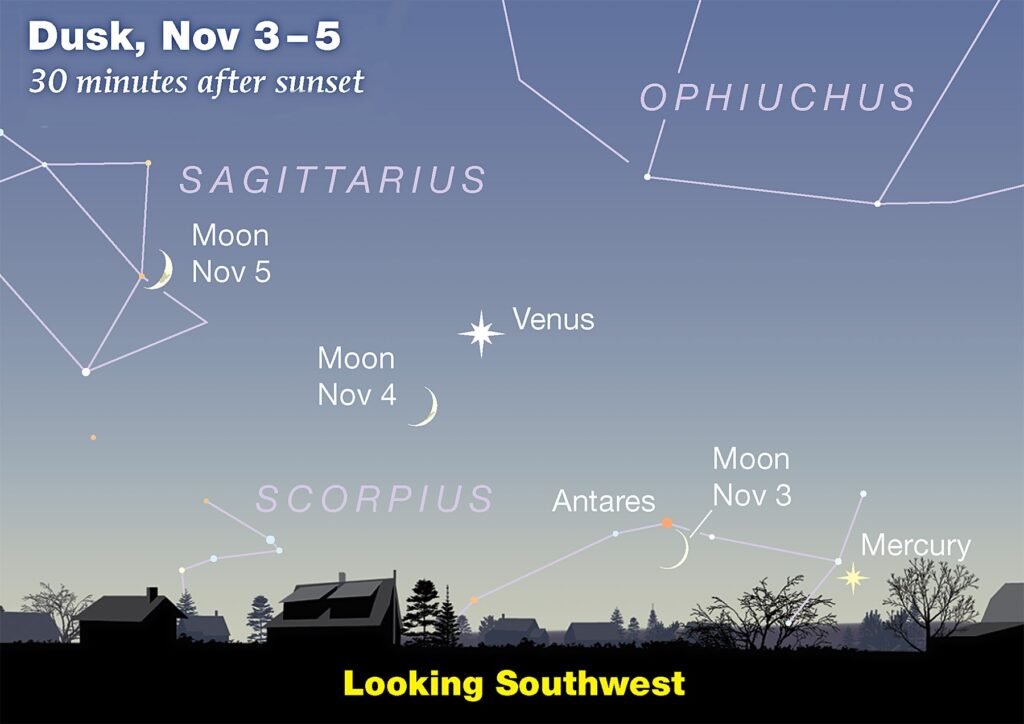
Mercury has come around the sun and can now be seen after sunset in the southwest. You will have to be quick to find it around 30 minutes after sunset in the night sky this week. Mercury will be to the lower right of Venus.
Venus is shining brightly on the southwestern horizon and setting around twilight’s end. Venus is now hovering close to the horizon, but it is now climbing higher each night. Around 40 minutes after sunset, look for Venus and a bright red star, Antares, the scorpion’s heart. Soon the planet will enter the constellation of Sagittarius. Venus will be a dazzling orange light close to the horizon due to our atmosphere’s light refraction setting around two hours after sunset. The crescent moon passes to the south of Venus on November 4 (Monday).

Saturn can be found high above the southern horizon after dark. If you have a small telescope, you might catch a glimpse of its famous rings. Don’t wait too long, though—soon, the rings will be edge-on and might seem to vanish for a bit. Saturn is the brightest object in the area, so it is easy to identify below and right of the Great Square of Pegasus in the constellation of Aquarius.
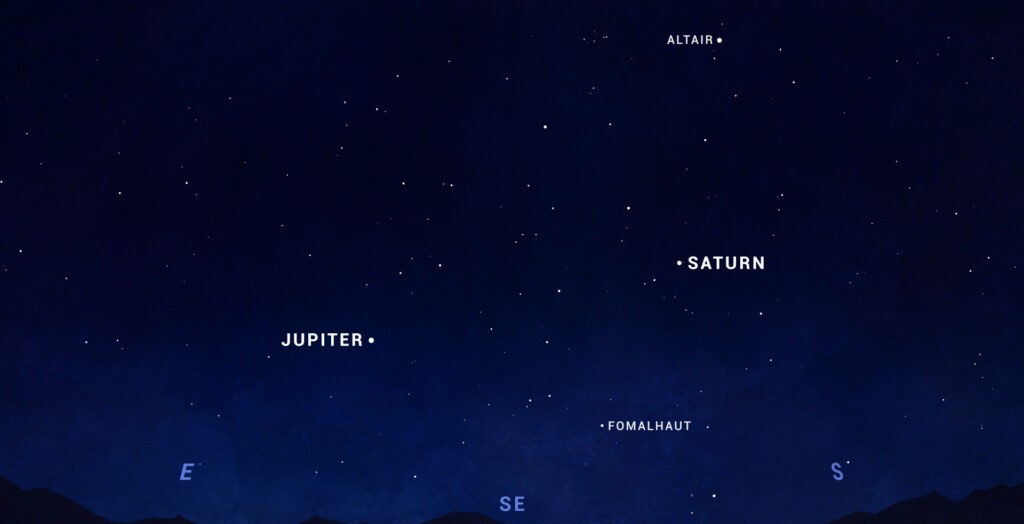
Jupiter is rising around 8:00 PM, shining as the fourth brightest object in our sky. Look for it between the horns of Taurus the Bull. During dawn, the planet is overhead toward the southwest, being one of the last night objects to fade during sunrise.
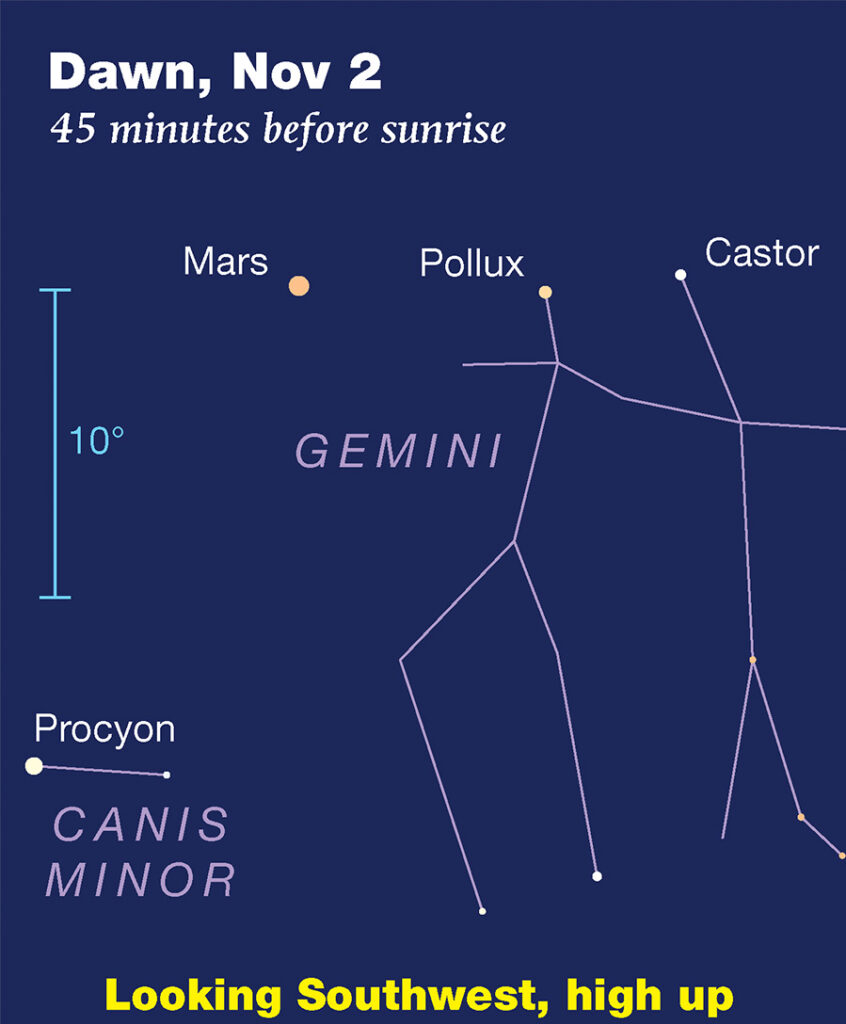
Mars is in the constellation Cancer rising shortly before midnight. It is close to two bright stars in Gemini called Caster and Pollux forming a semi-straight line. During the rest of the year, the red planet will brighten as it comes closer to Earth in its orbit.
You can still see the summer triangle high overhead in the west with the bright star of Vega almost overhead after sunset. It has seemed to be stalled but this is called the “Summer Triangle Effect”. As we go outside later, we are looking back at the star’s location toward summer.
The Great Square of Pegasus is now overhead. In Greek mythology, Pegasus is the winged horse, born from Medusa’s blood when she was slain by Perseus. It is associated with heroism and legend and is often depicted flying through the heavens.
While you look at Pegasus, notice a bright star to the south of the constellation called Fomalhaut. Fomalhaut is also called the loneliest star because is the only bright star in a wide stretch of sky. Sometimes call it the Autumn Star. From the Southern Hemisphere, you’ll look higher up to see Fomalhaut in your season of spring. In 2024, Fomalhaut isn’t so solitary, though! A bright planet, Saturn, appears near it in the sky. Of course, Fomalhaut will be the one that’s twinkling since Saturn will shine with a steady light.
Enjoy this cosmic spectacle throughout the week of November 8!
